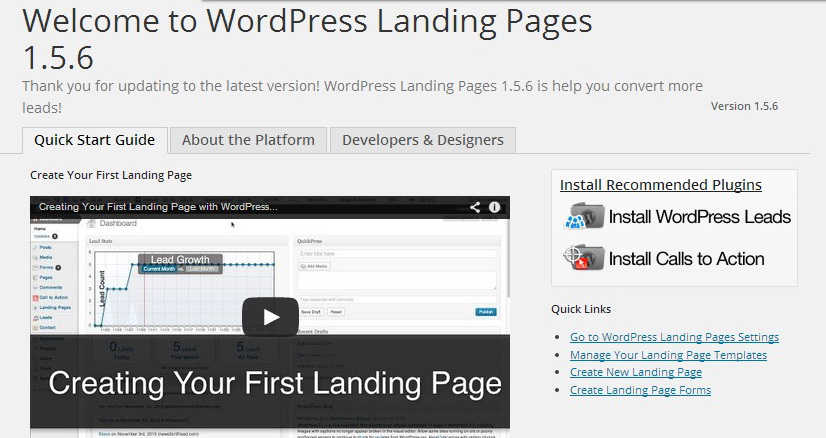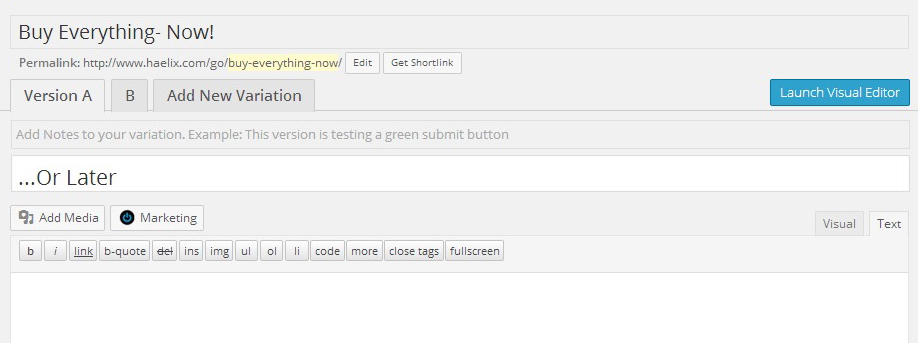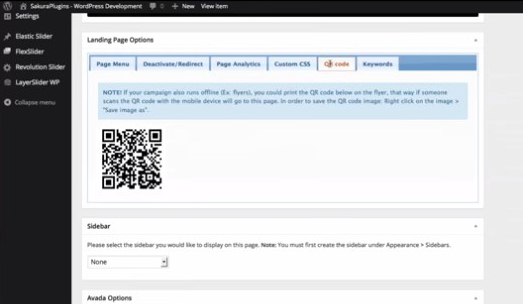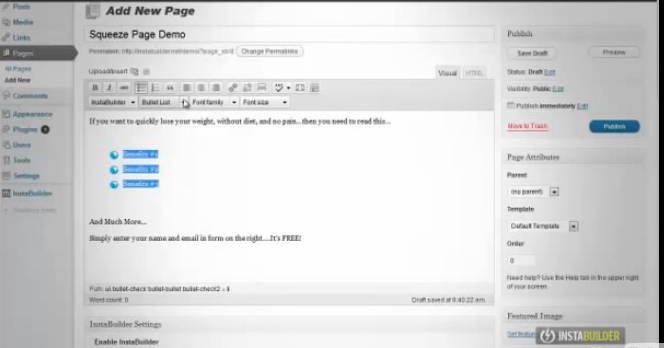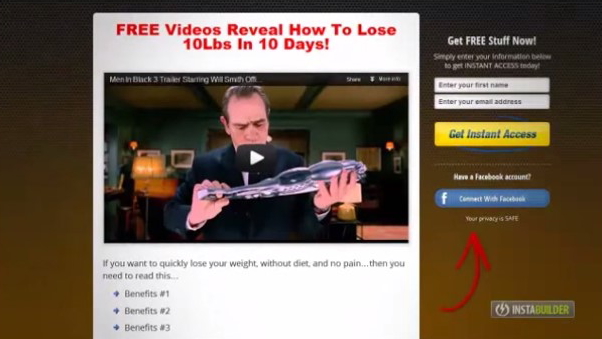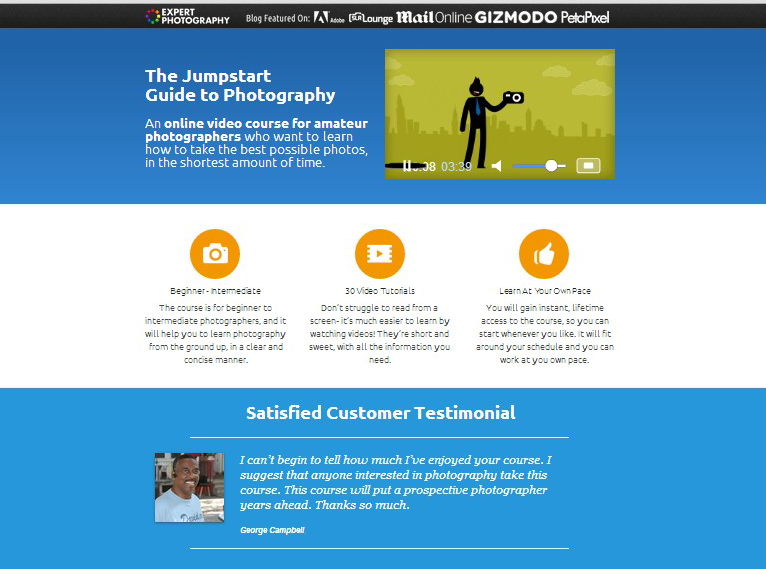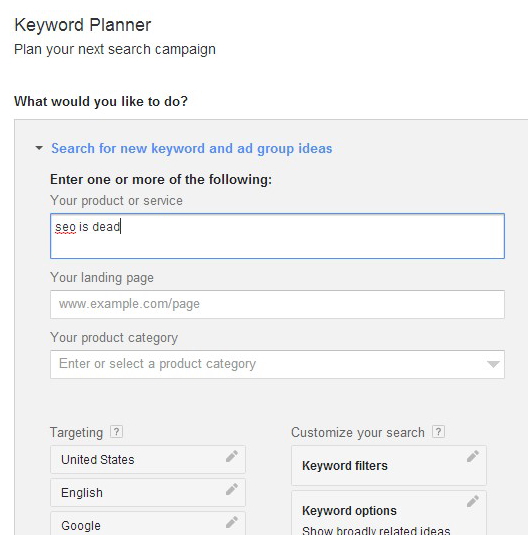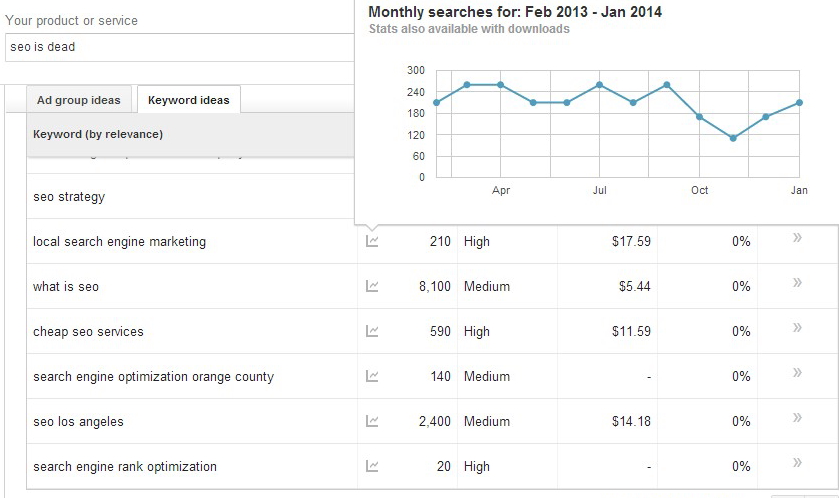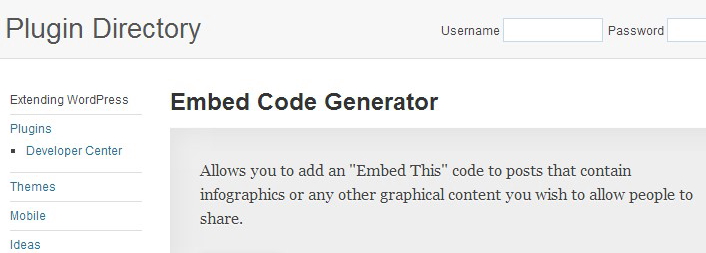If you read my post earlier this week on Landing Pages 101, you already know how important landing pages are to winning sales, increasing email subscribers, etc. You also have a good idea of how to write an effecting landing page. However, how do you go about generating the actual landing page on your WordPress (WP) website or blog?
Traditionally, landing pages were (and still are) generated on their own subdomain within a website. For example, if your website is http://www.mywebsite.com, then your landing page is parked at http://landingpage.website.com. This is done so that a visitor does not simply locate the landing page by visiting the website, but only by clicking on a designated ad, web page or email link.
Landing pages also usually required graphic design skills so that they’d have templates that looked professional and helped maintain consistency across multiple campaigns.
Both of these requirements made landing pages a bit of a challenge for beginner website owners and bloggers. Luckily, if the website or blog is hosted on a WP platform, there are many different WP plugins that can be used to install landing page generators and make the process easier. Here are some of the best free or affordably priced WP landing page plugins:
1. WordPress Landing Pages
This free plugin, created by David Wells and the Inbound Now team, offers a very comprehensive collection of features including unlimited landing pages, conversion rate tracking, A/B and multivariate split testing, email list integration, and contact form generation. When you download the plugin, you are instantly prompted to install two additional and free plugins: WordPress Leads and Calls to Action. These two plugins enable you to better organize and track your leads and create unique call-to-action (CTAs), respectively.
WordPress Landing Pages also comes with a visual editor, allowing you to make changes to your landing page and see how they appear in real time. A/B and multivariate testing is made easy with multiple WordPress-like page/post tabs that can be filled in and changed at will.
Finally, WordPress Landing Pages allows you to generate and insert marketing shortcodes; in essence, these are snippets of code that the plugin creates for social sharing buttons, check marks, or other icons. Best of all, you don’t need to do any coding to generate these icons.
The only drawback to WordPress Landing Pages is that integrating it with an existing email list is not free and costs $25-$35 (depending on the actual service).
2. Parallax Gravity
This free WordPress plugin enables you to create landing pages that use parallax sections; in other words, page text sections move while the images and background stay put. You can add as many sections and section materials as you wish and see the changes in real time via the plugin’s VisualEditor. Additional features can be added using shortcodes, including shortcodes from other plugins.
The two big drawbacks with this free plugin are the inability to set your landing page as the homepage and the lack of an autoresponder. However, because the plugin is very open to incorporating shortcodes, you could probably even create an autoresponder using your own shortcode.
3. WP Lead Plus Free Squeeze Page Creator
This free plugin also offers lots of parallax-enabled page sections, logo and video integration, and font control. It features a VisualEditor, enabling easy changes on-the-fly. And because your pages are created as basic WP pages, you can embed your own background and/or WP template(s).
Additionally, unlike Parallax Gravity, WP Lead Plus offers an autoresponder option as well as the ability to set your landing page as the homepage.
Being able to use your own website background and/or templates is actually crucial because this plugin doesn’t offer too many of its own templates- at least not in its free version. Another common complaint about this plugin is that it’s not very intuitive, and you need to carefully watch the video tutorials in order to create a decent landing page.
4. InstaBuilder
This fairly inexpensive plugin runs $47 for a single user license and enables you to create landing pages that contain high level graphics, one time offers, delayed pop-up messages with CTAs, Facebook opt-ins, autoresponders, offer timers, and videos. You also gain access to 70 pre-built templates and a huge range of images like buttons, guarantee symbols, boxes, etc. And you can still create your own images using the plugin’s marketing shortcodes.
Instabuilder landing pages can look quite slick, given that you’re able to add videos and pre-built graphics rather easily. Instabuilder pages can also be connected to Facebook using Facebook Connect, enabling users to click on those pages via their Facebook accounts.
Finally, Instabuilder-created pages are instantly formatted to fit on mobile devices like smartphones and tablets.
5. OptimizePress 2.0
This WordPress plugin, created by James Dyson, helps you not only generate professional-looking landing pages but also secure membership portals, online courses, webinar registration pages, product launch funnels and blogs. The plugin costs a $97 flat fee for three licenses, which is a bit more money than the other plugins described here, but the fee may well be worth it. Here’s an example sales page portion (with the CTA located at the end of a long scroll) that was generated using OptimizePress 2.0:
OptimizePress 2.0 comes with LiveEditor, meaning that your edits occur in a what-you-see-is-what-you-get format, allowing you to build a page in just minutes and know exactly how it’s going to look in real time. Email integration is included in your $97 fee.
The plugin offers numerous page layouts, with you selecting how many rows and columns you wish for your page to have. Theoretically, because there is no limit on numbers, you could have an infinite amount of rows/columns. There is also a ton of elements you can add into your pages, from buttons and content toggles to audio players and Facebook comments.
Landing pages…they’re the future (of your sales)!
If you are on the fence about buying a WP landing page plugin, try one of the freebies listed above. Even a rudimentary WP landing page plugin can help increase your product/service sales and draw in new customers. As time goes on, you may want to do more with your sales and/or better track your customers- and end up purchasing a paid plugin.
